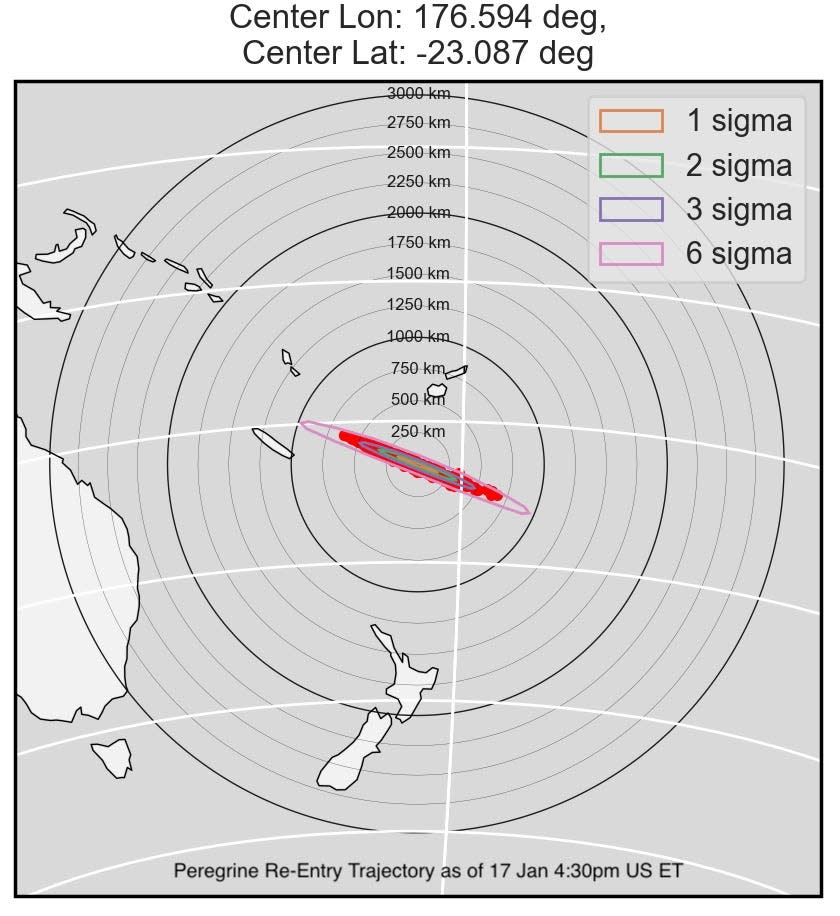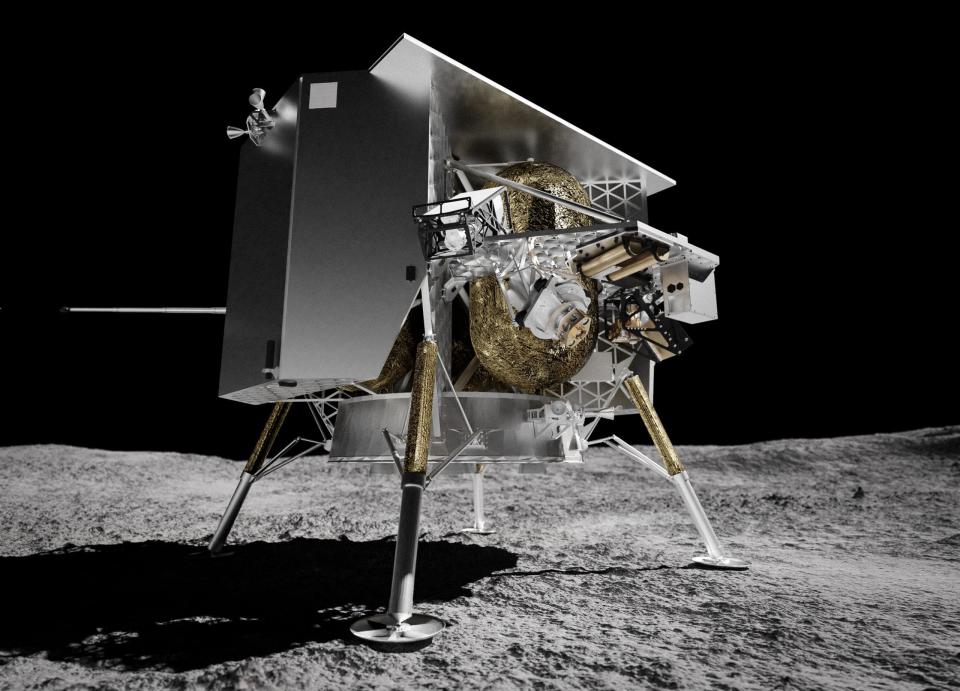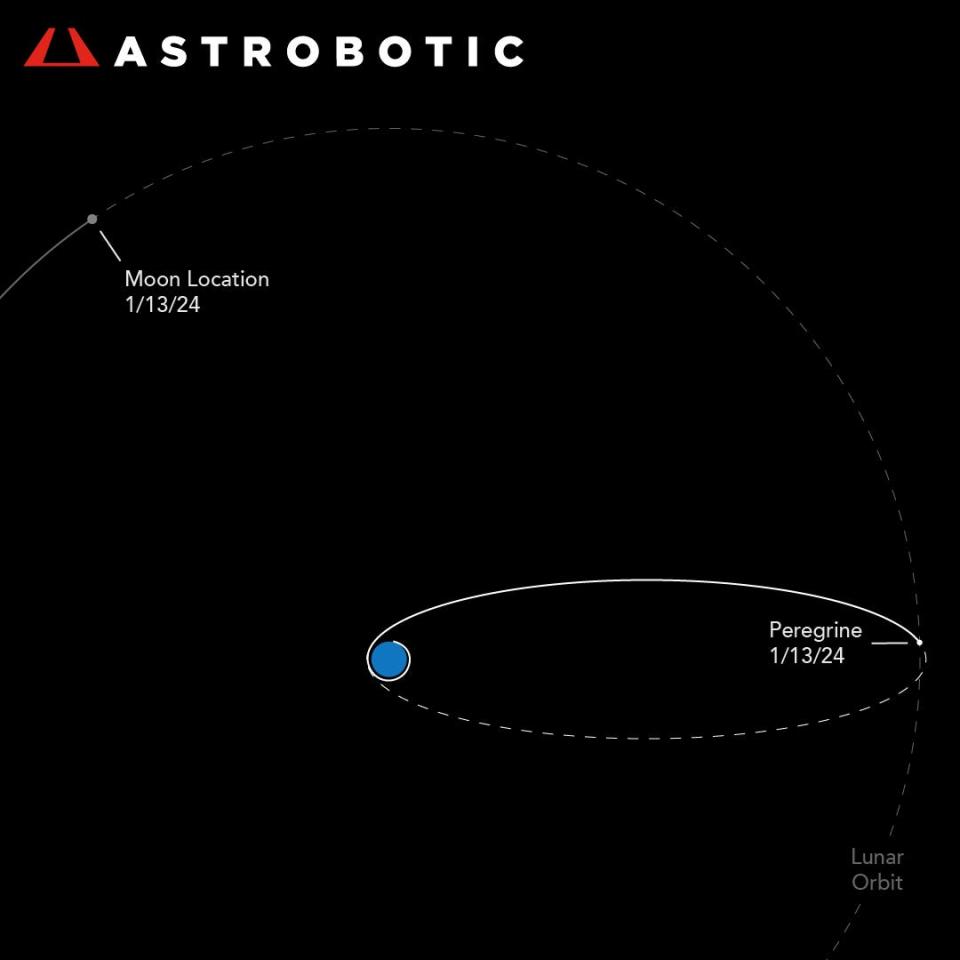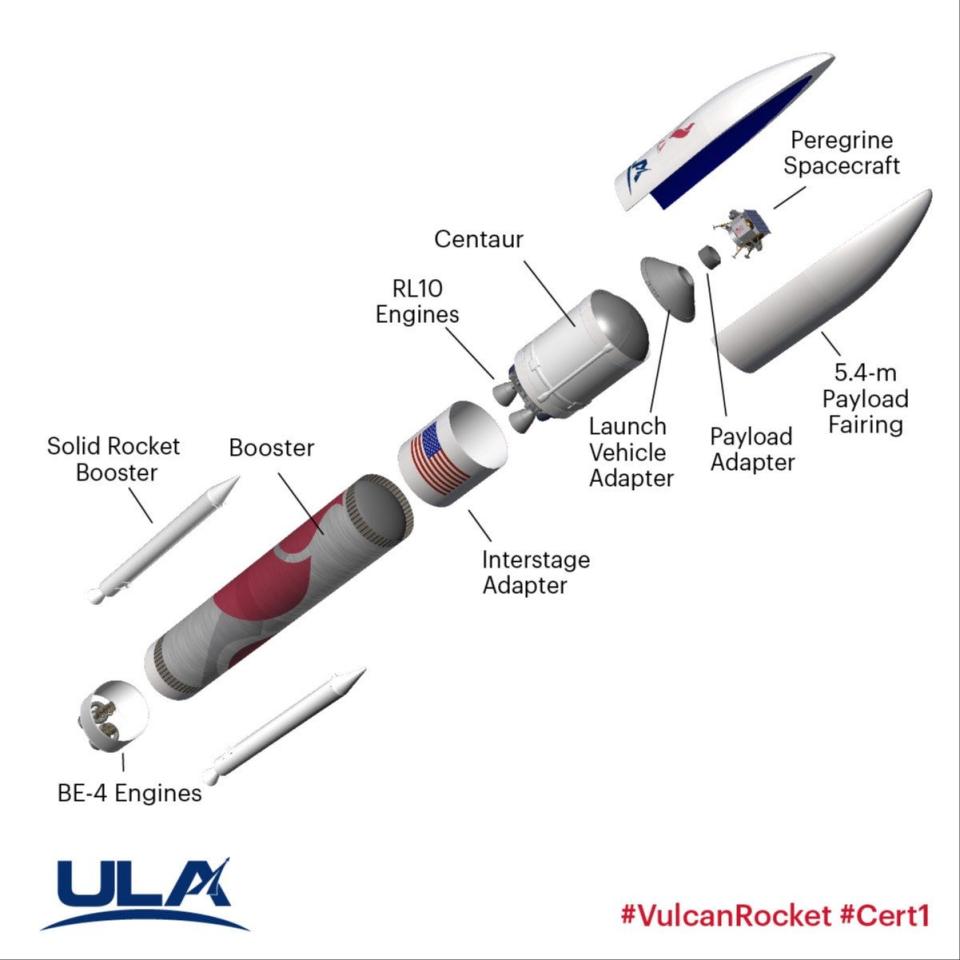Astrobotic's damaged Peregrine moon lander burns up in atmosphere over South Pacific Ocean
Update 9:58 a.m. Friday: Astrobotic officials said they lost telemetry with Peregrine about 3:50 p.m. Thursday, indicating the doomed spacecraft likely made its re-entry 14 minutes later over open water in the South Pacific Ocean.
Astrobotic officials previously explained how they prepared for atmospheric re-entry: "The first step required a main engine burn. Due to the propulsion anomaly, it was impossible to operate the main engines normally.
"As such, we developed a plan to fire the main engines with a series of very short burns. We conducted a test burn of all five main engines. Each pulse was spaced out to avoid overheating, allowing our mission control team to monitor results and the spacecraft’s status after every burn.
"Following this, we performed a series of 23 small main engine burns."

Original story: The rocket liftoff looked picture-perfect: United Launch Alliance's next-generation Vulcan soared off the pad in the Jan. 8 post-midnight darkness on its inaugural flight from Cape Canaveral Space Force Station.
But up in space, the Vulcan's payload — Peregrine, the first American commercial lunar lander to launch on a mission to the moon — promptly developed a propellant leak, torpedoing its mission.
Now, engineers with NASA and Astrobotic, the Pittsburgh company that built Peregrine, are directing the crippled spacecraft to re-enter Earth's atmosphere and burn up at about 4 p.m. today.
"Astrobotic has positioned the Peregrine spacecraft for a safe, controlled re-entry to Earth over a remote area of the South Pacific," a company statement said.
"The team has been continuously monitoring our re-entry analysis with NASA, which indicates a re-entry path over the indicated area below, with no anticipated hazards," the statement said.
As of that Wednesday night Astrobotic statement, Peregrine had been operating in space for 9 days and 16 hours. The impaired lunar lander was located 139,000 miles from Earth and closing.
"Spaceflight is an unforgiving environment, and we commend Astrobotic for its perseverance and making every viable effort to collect data and show its capabilities of Peregrine while in flight. Together, we will use the lessons learned to advance (NASA's Commercial Lunar Payload Services)," Nicola Fox, associate administrator of NASA's Science Mission Directorate, said in a statement.

More: ULA Vulcan rocket launches without delay on history-making maiden flight from Cape Canaveral
Peregrine had been scheduled to land on the moon on Feb. 23. The spacecraft is carrying four NASA spectrometers and a NASA laser retroreflector array.
These payloads were intended to help scientists better understand planetary processes and evolution, search for evidence of water and other resources, and "support long-term, sustainable human exploration," NASA reported.
Also aboard Peregrine: memorial payloads of cremated ashes from companies Celestis and Elysium. Celestis capsules carrying cremated remains and DNA were intended to "remain on the Moon as a permanent tribute to the intrepid souls who never stopped reaching for the stars," the company website said.

In opposition, Navajo Nation President Buu Nygren unsuccessfully called for postponement of the Jan. 8 Vulcan launch, contending, "the placement of human remains on the moon is a profound desecration of this celestial body revered by our people.”
NASA and Astrobotic initially scheduled a media teleconference at noon today to provide Peregrine updates. But in light of the planned atmospheric re-entry, the teleconference was postponed to Friday afternoon.
For the latest launch schedule updates from Cape Canaveral Space Force Station and NASA's Kennedy Space Center, visit floridatoday.com/launchschedule.

Rick Neale is a Space Reporter at FLORIDA TODAY (for more of his stories, click here.) Contact Neale at 321-242-3638 or rneale@floridatoday.com. Twitter/X: @RickNeale1
This article originally appeared on Florida Today: Astrobotic Peregrine moon lander burns up over South Pacific Ocean

